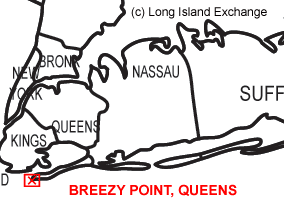 Breezy Point is a 500-acre neighborhood located on the western most end of the Rockaway Peninsula in the borough of Queens, part of the Metropolitan area of New York City. The community is run by the Breezy Point Cooperative, in which all residents pay the maintenance, security, and community-oriented costs involved with keeping the community private. It is part of Queens Community Board 14. Breezy Point functions mainly as a summer get-away for many residents of New York.
Breezy Point is a 500-acre neighborhood located on the western most end of the Rockaway Peninsula in the borough of Queens, part of the Metropolitan area of New York City. The community is run by the Breezy Point Cooperative, in which all residents pay the maintenance, security, and community-oriented costs involved with keeping the community private. It is part of Queens Community Board 14. Breezy Point functions mainly as a summer get-away for many residents of New York.
Breezy Point consists predominantly of dunes and beach shoreline terrain that extends outward into the Atlantic ocean. Physically separated from the rest of New York City by water, Breezy Point is a unique collection of guarded communities, history and nature.
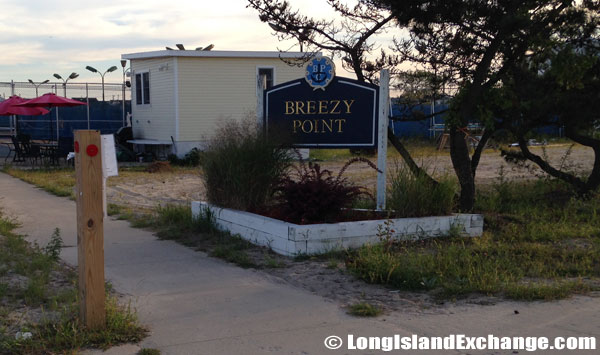 A sign welcomes visitors and residents to Breezy Point.
A sign welcomes visitors and residents to Breezy Point.
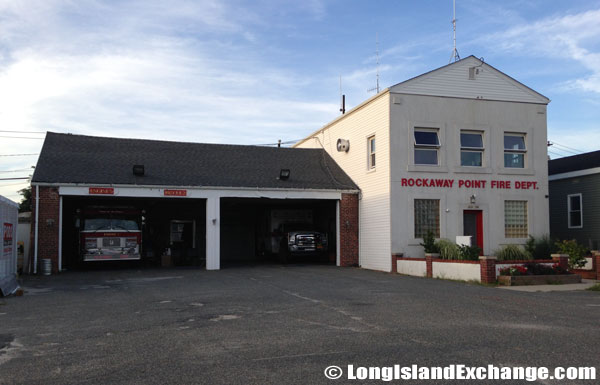 The Rockaway Point Volunteer Fire Department, one of three volunteer fire departments in the Breezy Point Community.
The Rockaway Point Volunteer Fire Department, one of three volunteer fire departments in the Breezy Point Community.
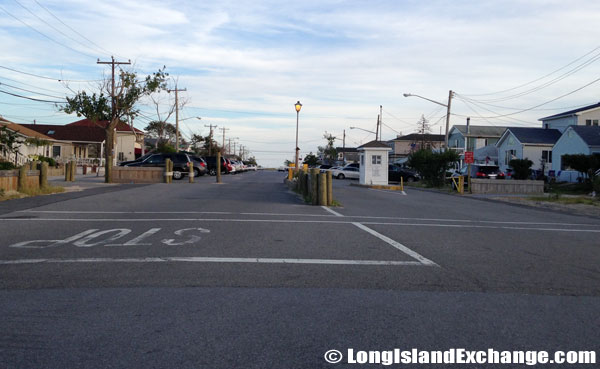 A typical seaside gated street in the private community of Breezy Point.
A typical seaside gated street in the private community of Breezy Point.
As of 2010 census, year-round residency was 4,337 with summer residency closer to 12,000. The community’s demographics are maintained as a result of a rule that a person, prior to buying a house, must be recommended by three current members of the Breezy Point Cooperative and approved by its Board of Directors. It is patrolled by its own private security force that restricts access to owners, renters and their guests.
 A north side walkway leads to an sensational view of Manhattan across the Jamaica Bay.
A north side walkway leads to an sensational view of Manhattan across the Jamaica Bay.
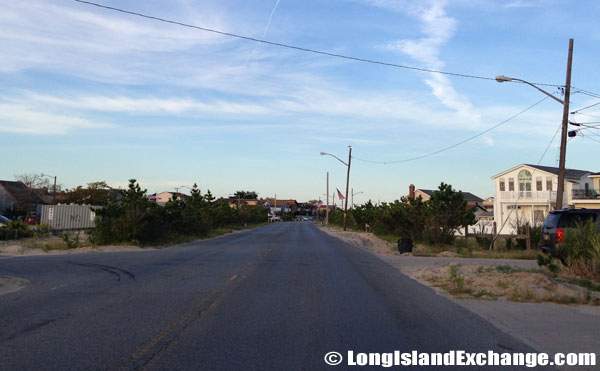 A typical street in the gated private community of Breezy Point.
A typical street in the gated private community of Breezy Point.
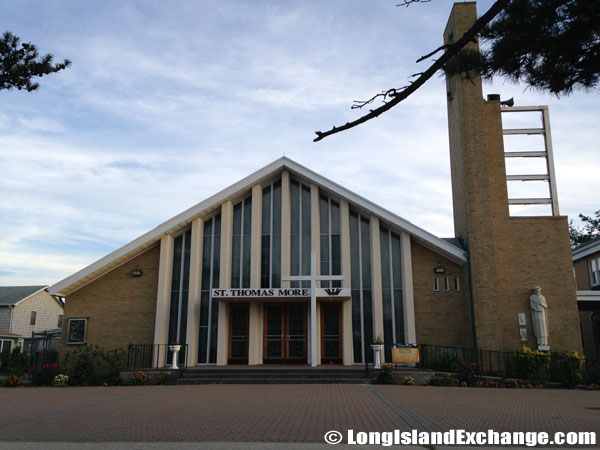 St. Thomas More Blessed Trinity Parish.
St. Thomas More Blessed Trinity Parish.
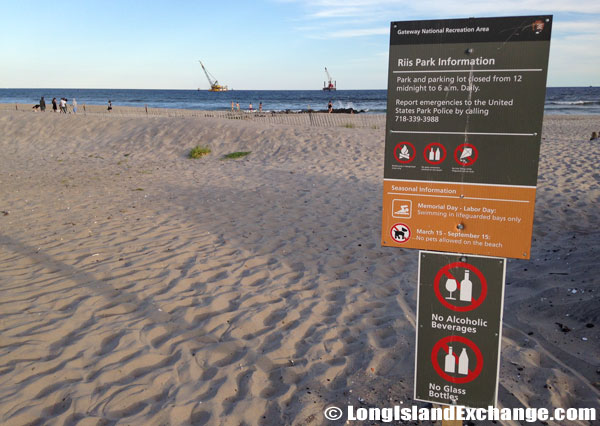 Riis Park Beaches.
Riis Park Beaches.
Breezy Point was hit hard by Hurricane Sandy on October 28th, 2012 and lost hundreds of homes to fires and flood. One year after Hurricane Sandy, homeowners found that their flood insurance nowhere near covered the repairs required. City officials originally thought federal funds would not be available or would cause the community to open access to its private beaches but finally received $1.2 million to pay for technical studies and permitting for a $56 million plan to build double dunes as a barrier between the shore-front community and the ocean.
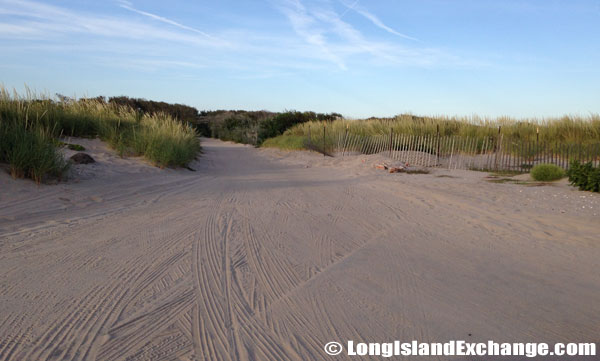 An area at Riis park where vehicles can drive right to the beach.
An area at Riis park where vehicles can drive right to the beach.
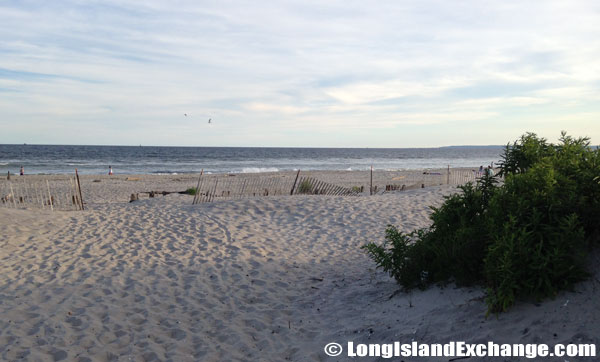 Riis Park Beaches.
Riis Park Beaches.
 The Breezy Point Surf Club, a private members only beach and club which sits isolated at the westernmost tip of Breezy Point at the very end of the Peninsula.
The Breezy Point Surf Club, a private members only beach and club which sits isolated at the westernmost tip of Breezy Point at the very end of the Peninsula.
The Breezy Point Surf Club is a private members only beach and club which sits isolated at the westernmost tip of Breezy Point at the very end of the Peninsula. In 1974 the land and buildings occupied by the beach club were transferred to the National Park Service and the park issued the club operators a special use permit which permitted their continued operations. In 2007, the National Park Service began to question the private use of its public lands despite the exclusive nature of the clubs. A three year temporary contract kept the club open and has been subsequently renewed.
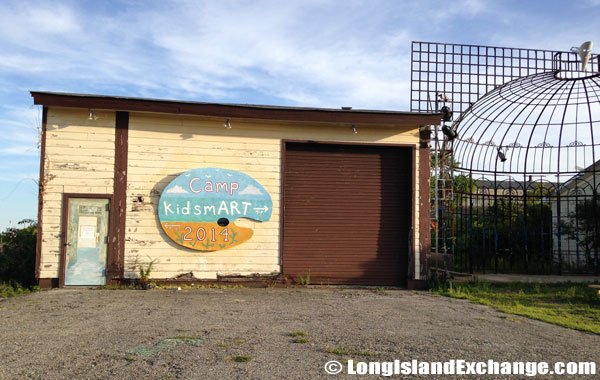 Camp kidsmART, where children enjoy arts and crafts, painting, sculpting, theater games, performing and more.
Camp kidsmART, where children enjoy arts and crafts, painting, sculpting, theater games, performing and more.
 A sign welcomes visitors to Fort Tilden, also known as Fort Tilden Historic District.
A sign welcomes visitors to Fort Tilden, also known as Fort Tilden Historic District.
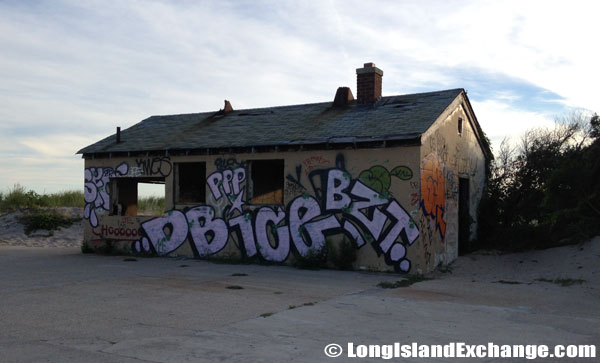 An abandoned building along the Fort Tilden beaches.
An abandoned building along the Fort Tilden beaches.
 The unprotected beach at Fort Tilden.
The unprotected beach at Fort Tilden.
Breezy Point, part of Gateway National Recreation Area, is the perfect destination for fishing and scenic walks on an unspoiled ocean beach. Visiting fisherman can expect to catch striped bass, blue fish and summer flounder, or simply get lost in the rural beauty of the Jamaica Bay. Although spring provides significantly good birding at Breezy Point, autumn and winter are the best times to visit. A trip to Breezy Point in fall might also be combined with a stop at nearby Ft. Tilden.
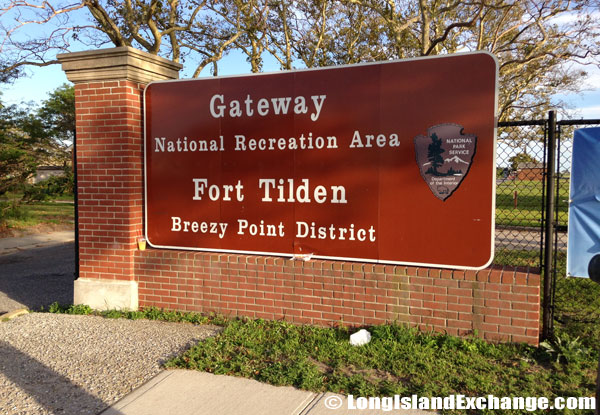 Fort Tilden, also known as Fort Tilden Historic District, is a former United States Army installation in the New York City borough of Queens and part of Gateway National Recreation Area.
Fort Tilden, also known as Fort Tilden Historic District, is a former United States Army installation in the New York City borough of Queens and part of Gateway National Recreation Area.
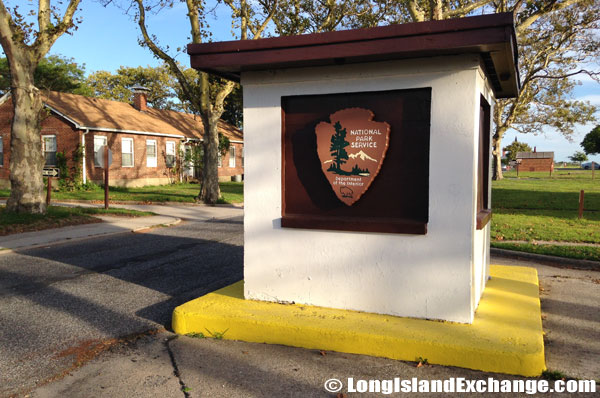 In 1974 the area of Fort Tilden was transferred to the National Park Service.
In 1974 the area of Fort Tilden was transferred to the National Park Service.
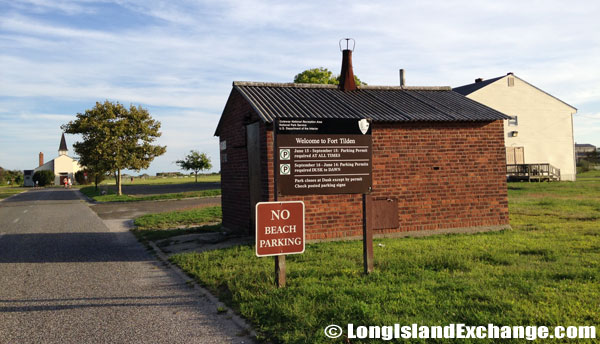 A sign welcomes visitors to Fort Tilden, also known as Fort Tilden Historic District.
A sign welcomes visitors to Fort Tilden, also known as Fort Tilden Historic District.
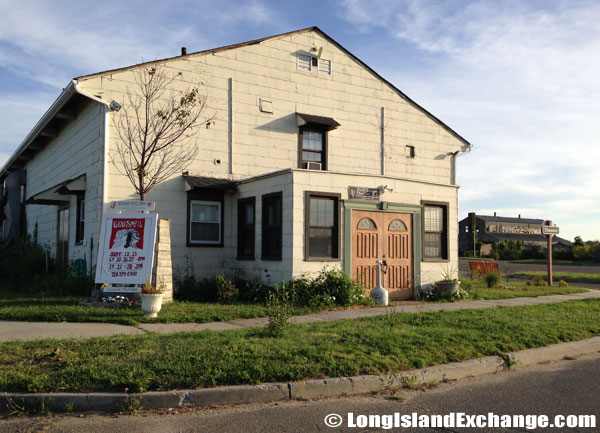 Rockaway Theatre Company, The Post Theatre, Building T4 Fort Tilden, Rockaway, NY. Home of the yearly Godspell Benefit Performance.
Rockaway Theatre Company, The Post Theatre, Building T4 Fort Tilden, Rockaway, NY. Home of the yearly Godspell Benefit Performance.
Fort Tilden, also known as Fort Tilden Historic District, is a former United States Army installation in the New York City borough of Queens and part of Gateway National Recreation Area. Its 317 acres were established in 1917 as a Coastal Defense Post. Today, Fort Tilden is a natural area of beach, dunes and maritime forest. Most of the old military installations are abandoned or have been renovated and used by local arts groups. The rest of the area is popular with bird-watchers and other nature-lovers and widely used for fishing.




